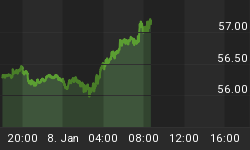Why read: To test the contemporaneous views I expressed four years ago, to observe similarities and differences then and now, and to determine if you agree with my current views.
Commentary then: On April 1, 2009 I commented as follows:
An article March 31, 2009 titled 'Record drop in home prices keeps U.S. consumers glum' says:
-
"U.S. home prices plunged at a record pace in January while consumer confidence held just above record lows in March"; and,
-
"Home prices nationwide have lost around 30 percent of their value from their peak in 2006".
The article also reports that U.S. consumer confidence rose slightly to 26.0 in March (from February), only 2% of Americans said they intended to buy a home in the next six months (the weakest reading since 1982), and car-buying intentions fell sharply.
Articles this morning (2009) then reported 'Manufacturing index shows contraction in March', saying the U.S. manufacturing sector contracted for the 14th straight month in March, but at a slower pace than expected - and that the number of unemployed people in the manufacturing sector in February rose to 1.8 million -- or 11.5% of that work force -- from 820,000, or 5% from a year earlier.
The article did say a handful of industries expect to benefit from the government's economic stimulus measures, reporting;
-
'U.S. Feb. pending home sales up 2.1%', saying that seasonally adjusted new sales contracts on existing homes rose by that percentage and was down 1.4% from a year earlier;
-
the U.S. Commerce Department reported construction spending in February fell a seasonally adjusted 0.9% annual rate from the prior month, and was down 10% from the prior year; and,
-
'Stocks rose on Wednesday' as data on home sales and manufacturing added to hopes that the economic slump was moderating, prompting investors to scoop up bank shares.
I don't see any of this as particularly encouraging. That said, I consider 'internal consistency' between data and conclusions to be of paramount importance, and don't understand how anyone could conclude that a combination of further manufacturing contraction, a further drop in home prices, a reduction in construction spending, and an increase in pending existing home sales (still down from one year ago) ought to result in an increase in public company share prices as measured by a stock index.
Commentary now: I have found the financial markets very confusing from March 2009 when they began to recovery. I continue to find them confusing. As I have said several times in these Newsletters:
-
value at a point in time is the present value of all future expectations at that point in time;
-
equity prices are driven in part from price-earnings multiples, a proxy I consider at best as second cousin to after-tax discretionary free cash flow; and,
-
price-earnings ratios, and weighted average costs of capital, when applied to static earnings or free cash flows both typically include assumed long-term growth rates; and,
-
over time the equity markets ought to reflect both the current and long-term world and country specific economic condition.
I certainly can't claim to 'time the markets', but for me they have been disconnected for some time now.
















